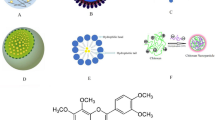Abstract
Certain anticancer drugs, such as the peptide CAMEL (aa sequence KWKLFKKIGAULKVL) induce necrotic type of cell death. During this process, a protein termed high mobility group box 1 (HMGB1) is released from cell nucleus into cytoplasm and then into extracellular milieu. Outside of cells, it becomes a proinflammatory cytokine. Its effects range from stimulation of cancer as well as endothelial cell proliferation, to activation of angiogenesis, cell motility and induction of inflammatory conditions. Release of HMGB1 cytokine during the course of anticancer therapy has negative effects upon the therapy itself, since it leads to tumor relapse. We assumed that the inhibition of HMGB1 activity may be conducive towards better therapeutic results in case of drugs inducing necrotic cell death. In this context we studied glycyrrhizin (GR), a triterpenoid saponin glycoside of glycyrrhizic acid and a well-known inhibitor of HMGB1. We have shown that GR inhibits proliferation and migration of cells stimulated by HMGB1 cytokine, as well as HMGB1-induced formation of blood vessels and reduces inflammatory condition (lowering tumor necrosis factor α levels). GR-mediated inhibition of HMGB1 activity (CAMEL-induced release) impedes, in turn, tumor regrowth in mice. As expected, inhibited tumor regrowth is linked to diminished tumor levels of the released HMGB1 and reduced inflammatory condition. To conclude, the use of GR significantly improved anticancer effectiveness of the CAMEL peptide.








Similar content being viewed by others
References
Campana L, Bosurgi L, Rovere-Querini P (2008) HMGB1: a two-headed signal regulating tumor progression and immunity. Curr Opin Immunol 20:518–523
Coffelt SB, Scandurro AB (2008) Tumors sound the alarmin(s). Cancer Res 68:6482–6485
Ellerman JE, Brown CK, de Vera M et al (2007) Masquerader: high mobility group box-1 and cancer. Clin Cancer Res 13:2836–2848
Gauley J, Pisetsky DS (2009) The translocation of HMGB1 during cell activation and cell death. Autoimmunity 42:299–301
Girard JP (2007) A direct inhibitor of HMGB1 cytokine. Chem Biol 14:345–347
Hanahan D, Weinberg RA (2011) The hallmarks of cancer: the next generation. Cell 144:646–674
Klune JR, Dhupar R, Cardinal J et al (2008) HMGB1: endogenous danger signaling. Mol Med 14:476–484
Lamore SD, Cabello CM, Wondrak GT (2010) HMGB1-directed drug discovery targeting cutaneous inflammatory dysregulation. Curr Drug Metab 11:250–265
Le Bitoux MA, Stamenkovic I (2008) Tumor-host interactions: the role of inflammation. Histochem Cell Biol 130:1079–1090
Lotze MT, Tracey KJ (2005) High-mobility group box 1 protein (HMGB1): nuclear weapon in the immune arsenal. Nat Rev Immunol 5:331–342
Mitola S, Belleri M, Urbinati C et al (2006) Cutting edge: extracellular high mobility group box-1 protein is a proangiogenic cytokine. J Immunol 176:12–15
Mollica L, De Marchis F, Spitaleri A et al (2007) GR binds to high-mobility group box 1 protein and inhibits its cytokine activities. Chem Biol 14:431–441
Nicosia RF, Ottinetti A (1990) Growth of microvessels in serum-free matrix culture of rat aorta. Lab Invest 63:115–122
Palumbo R, Sampaolesi M, De Marchis F et al (2004) Extracellular HMGB1, a signal of tissue damage, induces mesoangioblast migration and proliferation. J Cell Biol 164:441–449
Psaila B, Lyden D (2009) The metastatic niche: adapting the foreign soil. Nat Rev Cancer 9:285–293
Raucci A, Palumbo R, Bianchi ME (2007) HMGB1: a signal of necrosis. Autoimmunity 40:285–289
Rovere-Querini P, Capobianco A, Scaffidi P et al (2004) HMGB1 is an endogenous immune adjuvant released by necrotic cells. EMBO Rep 5:825–830
Scaffidi P, Misteli T, Bianchi ME (2002) Release of chromatin protein HMGB1 by necrotic cells triggers inflammation. Nature 418:191–195
Schlueter C, Weber H, Meyer B et al (2005) Angiogenetic signaling through hypoxia: HMGB1: an angiogenetic switch molecule. Am J Pathol 166:1259–1263
Sims GP, Rowe DC, Rietdijk ST et al (2010) HMGB1 and RAGE in inflammation and cancer. Annu Rev Immunol 28:367–388
Smolarczyk R, Cichoń T, Szala S (2009) Peptides: a new class of anticancer drugs. Postepy Hig Med Dosw 63:360–368
Smolarczyk R, Cichoń T, Kamysz W et al (2010) Anticancer effects of CAMEL peptide. Lab Invest 90:940–952
Srikrishna G, Freeze HH (2009) Endogenous damage-associated molecular pattern molecules at the crossroads of inflammation and cancer. Neoplasia 11:615–628
Tang D, Kang R, Zeh HJ 3rd et al (2010) High-mobility group box 1 and cancer. Biochim Biophys Acta 1799:131–140
van Beijnum JR, Nowak-Sliwinska P, van den Boezem E et al (2012) Tumor angiogenesis is enforced by autocrine regulation of high-mobility group box 1. Oncogene. doi:10.1038/onc.2012.49
Yang H, Tracey KJ (2010) Targeting HMGB1 in inflammation. Biochim Biophys Acta 1799:149–156
Yang H, Wang H, Czura CJ et al (2005) The cytokine activity of HMGB1. J Leukoc Biol 78:1–8
Zhu S, Li W, Ward MF et al (2010) High mobility group box 1 protein as a potential drug target for infection- and injury-elicited inflammation. Inflamm Allergy Drug Targets 9:60–72
Acknowledgments
We thank Drs A. Sochanik and J. Kajstura for invaluable suggestions and reading the manuscript. This work was supported by the Polish Ministry of Science and Higher Education, Grants No. N N401 034736, N N401 018337, N N401 587 540.
Author information
Authors and Affiliations
Corresponding author
About this article
Cite this article
Smolarczyk, R., Cichoń, T., Matuszczak, S. et al. The Role of Glycyrrhizin, an Inhibitor of HMGB1 Protein, in Anticancer Therapy. Arch. Immunol. Ther. Exp. 60, 391–399 (2012). https://doi.org/10.1007/s00005-012-0183-0
Received:
Accepted:
Published:
Issue Date:
DOI: https://doi.org/10.1007/s00005-012-0183-0




